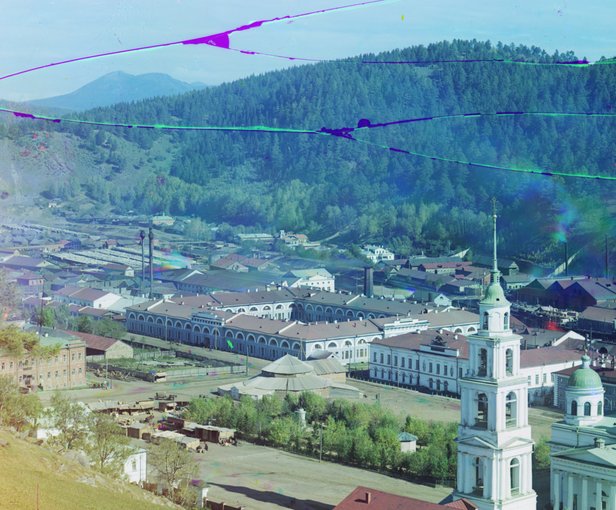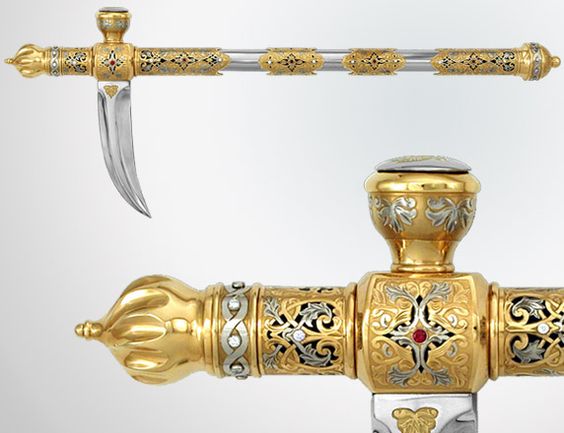Russia’s contradictions define it as a nation. East vs. West, Old vs. New believers, “backwardness” vs. modernization, and the list continues. Russia’s constant battle in these different contradictions has defined its actions, beliefs, and struggles throughout history. This photograph from Zlatoust, Russia in 1909 by Sergei Mikhailovich Prokudin-Gorskii visually represents the struggle between cultures that the Russian people faced during this time. Orthodox Christianity remained very important, as evident by the traditional Trinity Cathedral, while the industrial smokestacks and newer buildings almost tarnish the serene background of the Ural Mountains.

A series of reforms were implemented beginning during the reign of Nicholas I (1855-1890), often referred to as the Great Reforms. The Great Reforms reflected the conflicted nature of this era; according to Freeze, the goal was that “Russia could be a great power and maintain traditional social and political power.” (p. 200) Many of the reforms included education and the military. Especially after Russia’s embarrassing defeat in the Crimean War, they wanted to focus on becoming a great power in the military. However, their reforms did not affect the cultural and social spheres nearly as much. The reforms focused on issues that would allow Russia to become a greater world power without giving up its traditional and unique culture. In order to “have it all,” Russia had to reform, especially in the economic sphere. Russia’s lack of infrastructure made industrialization difficult, thus they were very behind the Western world in terms of technology. The emancipation of the serfs, one of the most revolutionary reforms during the great reforms, showed the Russian commitment to restructuring their economy in order to be able to industrialize. There were also social reforms during this time period, for example, elites had to give up many privileges and the education of the clergy declined. However, the majority of important changes were made in the economic and military sectors.

The plant pictured is the Zlatoust Plant, an ironworking plant that began operation in the mid-1700s and specialized in arms. The view from the photo accentuates the dark, polluting nature of the plant, shedding a negative light on the modernization that occurred. The church stands far away, light and bright, showing the sanctity and importance of traditional Russian culture. The church seems to look down on the industrialization, as many people did during this time in Russian history; the increased modernization and industrialization was seen as lack of pride in the unique Russian culture, despite the necessity of these reforms in order for Russia to become a greater world power. However, like much of Russian culture, there is much more under the surface than what meets the eye. The Zlatoust Plant continues to be in function today, creating some of the most intricately designed sabers and swords. Its products are considered less of weaponry and almost as art, appearing in museums not just for their historical context but also for their beauty. The tension between all of these factors is complicated and complex, and a little uncomfortable; it makes it impossible to pick a side. This is the tension that plagued early twentieth century Russia. The need to be Western, while retaining Russian identity and pride was a struggle without a solution.
Sources:
https://www.wdl.org/en/item/5272/#q=Prokudin-Gorskii&page=4
https://www.wdl.org/en/item/5270/#q=Prokudin-Gorskii&page=4
http://vsemart.com/zlatoust-engraving-art/
“Russia: A History,” Gregory L. Freeze.


Your analysis of the contradictions in Russian society is really interesting, and it definitely remains a trend. A lot of the other posts about Zlatoust speak on industrialization, but they don’t all address the negative impact on culture that you do. Excellent use of photos and sources this week. Keep it up!
LikeLike
What Drew said! That photograph really spoke to you and I appreciate the analysis. Acknowledging the subtlety of complexity can be challenging, but it’s really important.
LikeLike